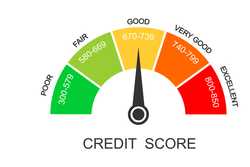5 Best Ways to Exchange Foreign Currency

Our evaluations and opinions are not influenced by our advertising relationships, but we may earn a commission from our partners’ links. This content is created by TIME Stamped, under TIME’s direction and produced in accordance with TIME’s editorial guidelines and overseen by TIME’s editorial staff. Learn more about it.
Cashless transactions are becoming more commonplace worldwide as consumers increasingly use debit and credit cards, mobile payment apps, and other types of digital payments for everyday spending. Still, you might want to exchange some U.S. dollars for foreign currency when traveling abroad—either because cash is still king at your destination or you prefer globetrotting with at least a little cash in your pocket.
There are multiple ways to exchange currency, but the goal is to get the best exchange rate with the lowest fees—something easier said than done. To help point you in the right direction, here are our tips for exchanging currency and finding the best deals.
Many banks and credit unions sell foreign currencies without charging a fee beyond the exchange rate. You can order currency by phone, online, or in person at your local branch and arrange to pick it up or get it delivered.
Some currencies will be "in stock" and available to exchange immediately, while others may require a few days to process. Once you return from your trip, you can convert any unused currency back to dollars—or stash it somewhere safe for your next adventure.
Once you reach your destination, an Automatic Teller Machine (ATM) is the best way to get currency to spend locally. ATMs generally offer competitive exchange rates, and you can avoid (or at least limit) fees by using ATMs in your bank's network. You can save on fees by withdrawing larger amounts of cash once or twice rather than making frequent, smaller withdrawals. Check with your bank to find out your daily and per-transaction ATM limits, and request an increase if you plan to access more cash.
Money transfer apps let you send money to friends, family, and merchants worldwide. Most transfers are completed within minutes. The apps are free to use (though you'll generally pay a fee if you use a credit card instead of a linked bank account to fund the transfer). You may also pay a fee if the cash needs to change currencies.
Another option is to order cash through an online currency converter. However, you may get a poor exchange rate. Also, the pick-up and delivery fees could be higher than the amount your local bank charges, depending on how much currency you exchange.
Airport kiosks, hotels, and tourist centers are convenient ways to exchange currency. However, the high fees and poor exchange rates mean less cash in your pocket. If you can plan ahead, you'll get a better deal exchanging currency at your local bank or credit union.
Currency exchange lets you swap one currency for another, such as trading U.S. dollars (USD) for euros. Because currency values continuously fluctuate, the exchange rate you receive depends on what's happening in the global markets at any given moment. It's rarely a 1:1 ratio. Instead, one USD might buy, for example, 0.93 euros, 16.32 Mexican pesos, or 151.83 Japanese yen.
Many banks let you exchange USD for foreign currencies (and vice versa) for free, but you may need to be a customer—or have a premium bank account plan. Still, remember that the exchange rate you receive may include the bank's profit, fees, costs, charges, or other markups in the spread—meaning you're still paying for the exchange. Check with your bank for details.
ATMs are often your best bet for getting foreign currency while traveling internationally. ATMs generally offer competitive exchange rates, and if you use ATMs in your bank's network, you can limit fees. Remember that the ATM (or its affiliate bank) may also charge a fee of several dollars or more. ATMs in touristy areas sometimes have higher fees than those in non-touristy parts of town.
You won't have to go out of your way to trade in your dollars at airport kiosks, hotels, or tourist centers, but they are some of the worst places to exchange currency; the high service fees and poor exchange rates mean you'll get less bang for your buck. (Of course, it's best to avoid currency exchange shops in remote or sketchy areas—not only because of excessive fees and unfavorable exchange rates but also because of the security risks.)
Still, you can try negotiating for a better rate or lower fees—but you'll need to know the current exchange rate going into the transaction. A quick Google search will display real-time exchange rates. For example, a "USD to EUR" search shows that $1 buys 0.93 euros (as of May 5, 2024). You can also use an online currency converter like Oanda or Xe to view live exchange rates.
Credit and debit cards are simple alternatives to exchanging currency. Many credit cards—and some premium debit cards—offer travel rewards and protection benefits, making them an even more attractive option. Still, there are a few things to keep in mind when using your card internationally:
Before you travel internationally, find out if the areas you’ll be visiting accept credit cards. If so, you may not need any foreign currency (unless the idea of traveling without cash makes you uncomfortable). Consider charging larger purchases, like hotels and organized tours, and getting cash at an in-network ATM for everyday expenses like coffee, street vendors, and tips.
You can exchange many—but not all—foreign currencies at a bank. Stable currencies, like dollars, euros, and British pounds, are generally easily exchanged worldwide. However, illiquid or heavily regulated currencies may be difficult (or impossible) to exchange in many parts of the world.
Currency exchange isn't free. You’ll pay for the service through a fee or a spread on the exchange rate (or both). Still, an ATM withdrawal can be a low-fee option when using an in-network ATM. (Check your bank's app to find an ATM near you.) Before your trip, consider asking your bank to increase your daily and per-transaction withdrawal limits. That way, you can make fewer trips to the ATM and save money on fees.
One of the easiest ways to get foreign currency is via an ATM withdrawal; you only need your ATM card and PIN. If you exchange currency anywhere else, you'll need a valid government-issued ID, such as a driver's license or passport. Depending on the exchange service and the amount of currency you exchange, you may also need proof of your address or other documentation.
Before your trip, you can order foreign currency from your bank or credit union to pick up at your local branch. (You may also be able to have it delivered, although there may be a delivery fee.)
Another option is an online currency converter that delivers cash to your home address, but the rate will likely be less favorable than your bank offers. Once out of the country, your best option is to use your bank's ATM network.
Whether heading out of the country or returning from a trip, it's generally best to avoid exchanging currency at airport kiosks, hotels, and tourist centers; skip the high fees and poor exchange rates and keep more money in your pocket for your next adventure.
The information presented here is created by TIME Stamped and overseen by TIME editorial staff. To learn more, see our About Us page.



